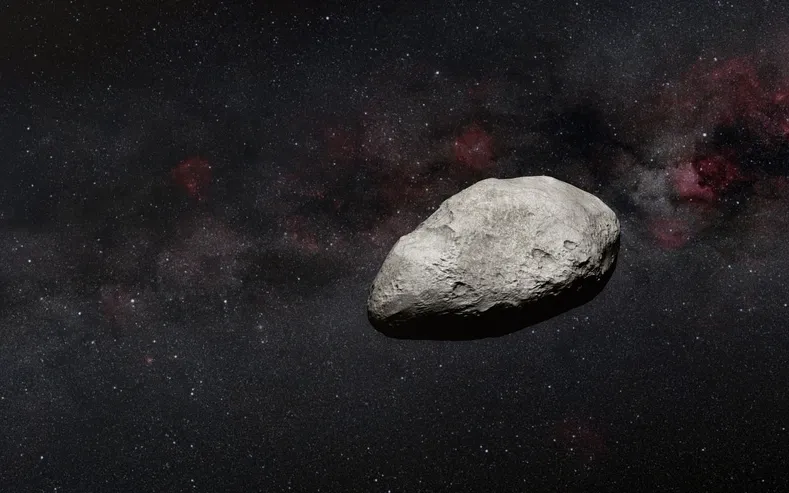NASA Data Reveals 110-Foot Asteroid Racing Towards Earth at High Speed
Most asteroids originate from the asteroid belt between Mars and Jupiter, where they are displaced from their original orbit. These asteroids have an elliptical orbit and can rotate unpredictably. NASA warns that these massive rocks can collide with planets due to the gravitational forces exerted by other planets in our solar system, causing them to move towards the inner solar system, including Earth. To keep track of these hazardous asteroids, NASA’s Jet Propulsion Laboratory continuously monitors them.
Currently, NASA has expressed concern about an asteroid hurtling towards Earth, and it is expected to pass dangerously close. The asteroid in question is called 2023 LL, has a diameter of 110 feet, and NASA has revealed that it is expected to approach Earth today, June 10th. NASA’s Center for Near-Earth Object Studies (CNEOS) red flags all future asteroids that pass within 4.6 million miles or 7.5 million kilometers of Earth and are larger than 150 meters. If the asteroid reaches this distance, the space agency identifies it as potentially dangerous and issues an alert.
So, is the 110-foot-wide asteroid 2023 LL a threat to Earth? Here’s what NASA’s assessment says.
Asteroid 2023 LL details
According to asteroid tracking data, NASA says Asteroid 2023 LL will fly by Earth today at a distance of just 1.31 million miles. NASA’s CNEOS data revealed that it is accelerating at 49,095 km/h.
Astronomers had discovered this asteroid known as 2023 LL recently – on May 26, 2023. This asteroid is classified as belonging to the Apollo group. According to Sky.org, it completes one orbit around the Sun every 592 days. Fortunately, it is not classified as a potentially dangerous asteroid. However, given the fact that it is expected to come dangerously close, it is very important to constantly monitor this huge space rock to prevent any accidents.
Asteroid tracking technology
In order to detect these types of hazards in time, NASA has established the NEO Observation Program, whose mission is to find, track, and characterize NEOs, and to identify those that may pose a threat to Earth. Ground-based telescopes and NASA’s NEOWISE spacecraft are currently used to locate NEOs.
Originally named WISE (Wide-Field Infrared Survey Explorer), the space telescope was launched in December 2009 with the mission of scanning the sky in infrared to detect stars, asteroids and faint galaxies. The telescope successfully completed its mission by February 2011. Later in December 2013, the telescope was repurposed as NEOWISE to study NEOs, asteroids, and comets after being brought out of dormancy.




